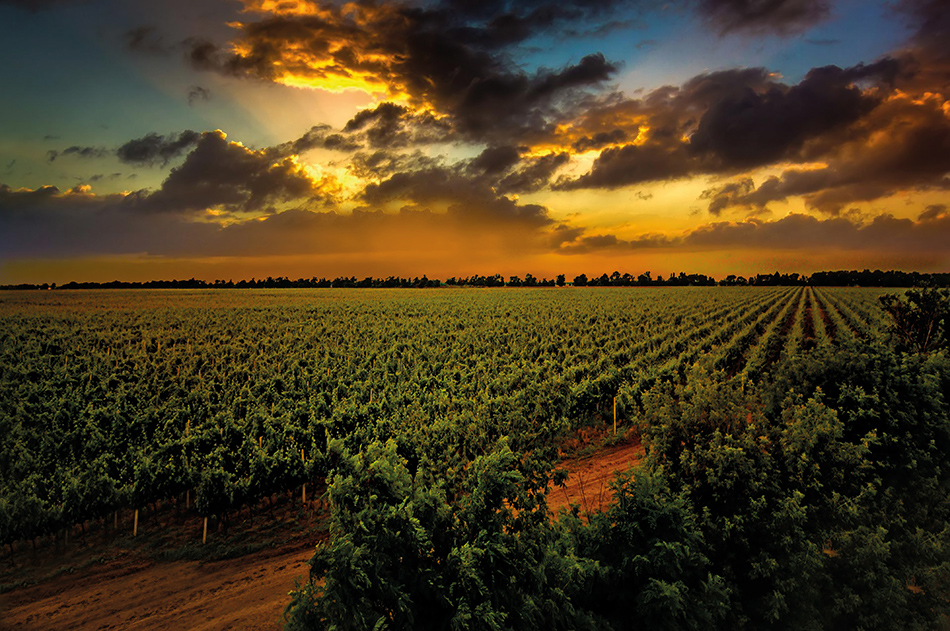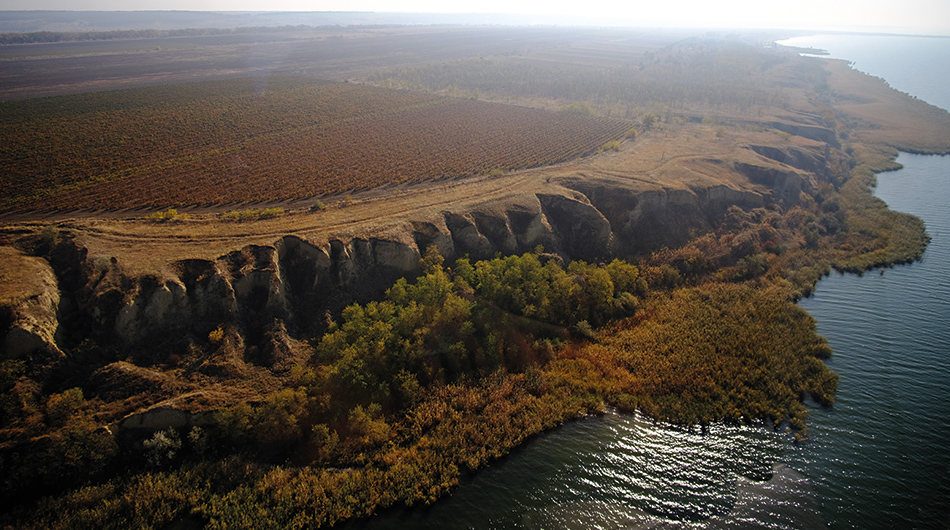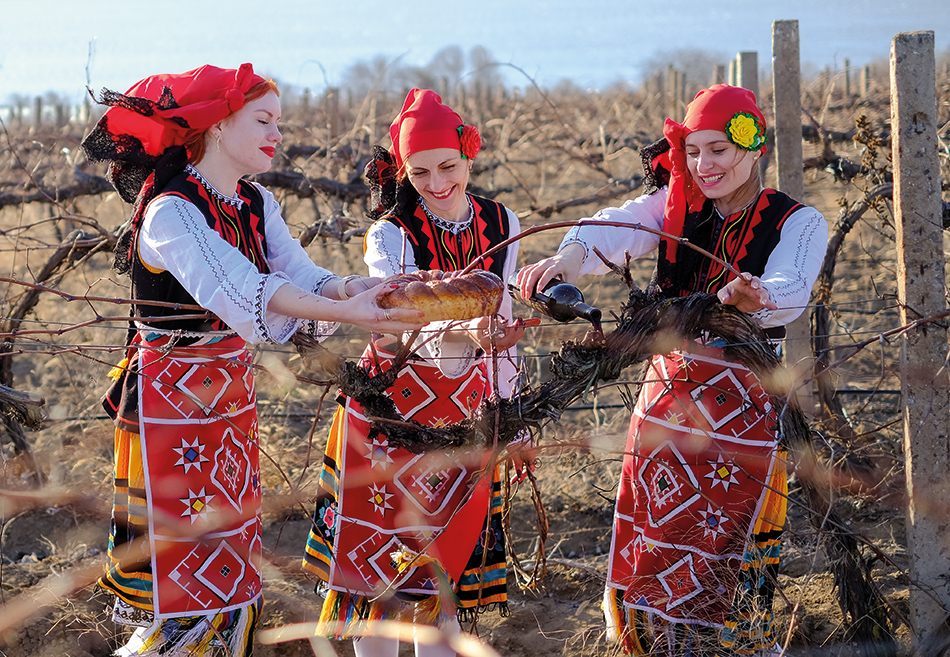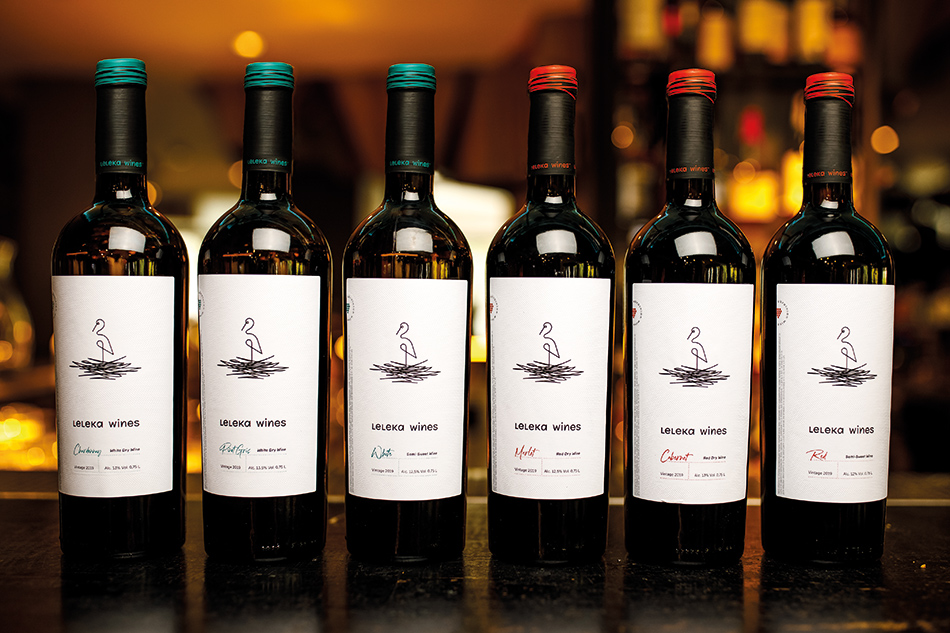Southern Bessarabia is one of the most prominent wine regions of Ukraine. It is located in the South-West of the country, in the Odesa region, between the three famous rivers: the Dniester, the Prut and the Danube. It borders on Moldova and Romania and is washed by the Black Sea. This rich and beautiful land is known for the ancient traditions of Thracian and Greek winemaking. The greater part of Bessarabia is covered by the spacious steppes, filled with the aromas of various herbs, sun-dried in the hot summer. However, throughout the year, the climate here is quite humid, with mild winters. Springs often have fog and clouds here, while summers are usually long, hot and dry, with maximum temperatures of +36/+39 C. One may say that dust storms and droughts are quite typical for Southern Bessarabia these days. The soils here are perfect for viticulture: apart from the famous Ukrainian black soils, quite a large part of this land has loamy soils rich in minerals, with deep-lying deposits of limestone.
Let us check the top wineries of Southern Bessarabia.
Location: Shabo, Bilhorod-Dnistrovsky distr.
Capacity: 18 mln bottles per year.
Own vineyards: 1,200 ha.
Age of vines: 10-50 years.
Founded in 2003, this winery is a family business of the Iukuridze family, of Georgian origin. Here, the ancient traditions of Georgian winemaking are bonded with over 2000 years’ wine heritage of Bessarabia and the influence of the Swiss colonists who populated this land at the beginning of the 19th century. SHABO produces still and sparkling wines, brandy and grape vodka. Technologically it is equal to, or even surpasses many leading European wineries. SHABO Wine Culture Center is one of the most famous tourist attractions in the region. Their vineyards lie between the Black Sea and the Dniester estuary.

Varieties: Cabernet Sauvignon, Cabernet Franc, Merlot, Pinot Gris, Pinot Noir, Rhine Riesling, Sauvignon Blanc, Syrah, Chardonnay etc. SHABO also grows the Georgian red variety, Saperavi, and Ukrainian indigenous white, Telti-Kuruk. The company is proud of the only self-rooted vineyards of this variety in Ukraine.
SHABO wines have received more than 500 awards from Mundus Vini, IWC etc. In 2021 they got the first gold medals in Ukraine from the Decanter Wine Awards for Chardonnay Grande Reserve 2015 and Cabernet Grande Reserve 2017. SHABO wines can be found in Michelin restaurants in Paris and London and in the Wine Museum of Bordeaux. Since 2012, they have been exported to 20 countries in Europe, North America and Asia. “Despite the Russian aggression in Ukraine, this year we have exhibited our wines at ProWein and the London Wine Fair. Experts claim that the 2022 harvest will be incredible. This will be the vintage of our victory!” — says Giorgi Iukuridze, co-founder of SHABO.
Wine to notice: Telti-Kuruk Reserve 2018, made of the indigenous Telti-Kuruk variety.
Color: light straw. Nose: delicate aroma of acacia flowers with bright notes of quince and steppe herbs and a hint on citrus and pineapple. Palate: medium body and acidity, well-rounded taste with a distinct and lasting mineral finish. Ageing: 2022-2023.
Location: Krynychne, Bolhrad distr.
Capacity: 280 000 bottles per year.
Own vineyards: 33 ha.
Age of vines: 9-15 years.
The winery is owned by Ivan Plachkov and his wife Alla. It was founded in 2005. The winemaker’s great-grandfather was one of the Bulgarian colonists who settled here in the 18th century, and it is his portrait that adorns the logo of the winery. Kolonist vineyards lie on the south-western slopes of Ukraine’s largest freshwater lake, Yalpug, and receive a double amount of sunlight, reflecting on the surface of the lake.

Varieties: local Odesa Black (red) and Sukholimansky (white), international — Chardonnay, Rhine Riesling, Cabernet Sauvignon, Merlot. In May 2022, two wines by Kolonist, Odesa Black and Sukholimanskiy, were commended as the best at the Alberta Food & Beverage Expo Consumer Choice Awards in Canada. Today, despite multiple financial, organizational and technical problems caused by Russian aggression, Kolonist continue to bottle and sell their new and best vintages.
Wine to notice: Cabernet Merlot “Haut de gamme” 2016. Fermentation in oak, aged 14 months in new French barriques.
Color: dark ruby. Nose: dark cherries, dried fruits, mulberry, prunes, coffee, mint, smoky notes. Palate: elegant, with moderate tannins and a rich, lasting finish. Ageing: 2023-2025.
Location: Oksamytne, Bolhrad distr.
Capacity: 400,000 bottles per year.
Own vineyards: 1000 ha.
The winery was founded in 1998, yet over 120 years ago a vine growing chateau of Count Davydov was standing on this plot. The vineyards are located in the valley of Yalpug lake.

Varieties: whites — Sukholimansky, Riesling, Sauvignon Blanc, Irshai Oliver, Gewürztraminer; reds — Cabernet Sauvignon, Merlot and Odesa Black.
The production complex of the winery has French and Italian equipment, an up-to-date bottling line for still and sparkling wines, as well as its own certified laboratory. In 2018, Winehall Oksamytne joined the creation of PDO Yalpug, the geographical indication for Odesa Black and Sukholimansky varieties. The company’s brands are Villa Tinta (still wines) and Tintarella (sparkling wines). They are exported to Romania and Germany.
Wine to notice: Villa Tinta Odessa Black VIP 2018. Aged in oak for 6 months. Ukrainian and European experts consider this wine to be the best example of Odesa Black in Ukraine.
Color: dark. Nose: prunes, jam, sweet pepper, distinct notes of dark chocolate, oak, leather and spices. Palate: full body, round tannins, medium acidity. Ageing: 2024-2026.
Location: Rozivka, Bilhorod-Dnistrovsky district, Odesa region.
Capacity: up to 350,000 l per year.
Age of vines: 15-17 years.
Leleka Wines is a new brand created by Wine Discovery Selection, a Ukrainian wine import and winemaking company. The brand was named after a stork, which in Ukraine is considered to be a symbol of family and well-being. The vineyards from which Leleka Wines buy grapes are located in the valley of the Kogylnyk River, on its southern slope. The vine growing process is fully controlled by the producer.

Varieties: Chardonnay, Pinot Gris, Merlot, Cabernet Sauvignon, Sauvignon Blanc, Odessa Black.
The launch of Leleka Wines was extremely successful, but the war came as a schock. The company’s warehouse near Kyiv has been destroyed by Russian bombing during the first days of the invasion. Yet most of Leleka’s 2021 vintage has been bottled by now, and the year 2022 is very promising.
Wine to notice: Chardonnay Reserve 2019. 6 months in oak. Commended by Austrian Wine Challenge.
Color: yellow straw with golden hints. Nose: pineapple, lemon zest and pears, a vivacious fragrance of linden and acacia and some vanilla. Palate: medium body and acidity, delicate and lengthy finish of baked apples, almond flakes and butter. Ageing: 2022-2025.
The winemaking of Southern Bessarabia, like that of other wine regions in Ukraine, is going through rather difficult times now. Some technological processes have been paused recently due to the war. But nature cannot be stopped, it has its own plan. The vines are growing. Life goes on, and so does winemaking.
Victoria Makarova